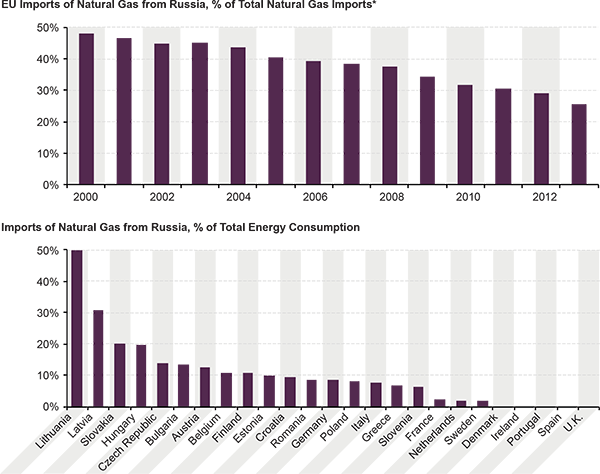Tensions in Ukraine and tapering speculation seem unlikely to derail rising U.S. equity markets and the positive outlook for U.S. credit.
Tensions in Ukraine have added to market volatility and the path ahead for the country is still very uncertain. However, barring a major military event, the Ukrainian crisis seems unlikely to interrupt the global economic expansion that is getting underway. Even the prospect of a natural gas supply shock to Europe has been blunted by a buildup in inventories over the winter that has left the continent less reliant on Russian supplies. The Chicago Board Options Exchange Volatility Index, known as the VIX or the fear index, spiked from 14 on Friday to 16 on Monday before falling back to 14 as tensions eased. Developments in Ukraine remind us that these days, bad news can be viewed as good news for investors. On Monday as conflict loomed, U.S. stocks sold off and a flight-to-quality assets pushed yields on 10-year U.S. Treasuries lower. This dynamic nudged mortgage rates lower which boosts home affordability heading into the crucial spring home selling season. However, as tensions dissipated on Tuesday, stocks rallied with the S&P500 hitting record highs that would boost the wealth effect, buoying consumer spending. Either outcome seemed reasonable for U.S. investors.
This week’s dip in 10-year U.S. Treasury yields is a reminder that despite the conventional wisdom that interest rates will rise, the risk is that rates could go lower in the near term. This is especially true as investors speculate about the reasons behind the slowing of U.S. economic growth over this exceptionally cold winter. Federal Reserve Chairwoman Dr. Janet Yellen told the Senate Banking Committee last Thursday that terrible weather may explain some of the ongoing winter soft patch that has slowed the U.S. economic expansion, but the extent of the impact is unclear. Her view will most likely heat up speculation over the weather, the condition of the U.S. economy, and the prospect that the Fed might consider a change in its pre-stated plan to taper bond purchases in $10 billion steps at each policy meeting. Over the coming weeks, financial markets are now likely to become increasingly reactive to each new economic data release.
Any weakness in this Friday's February employment report will place additional pressure on the Fed to revise the trajectory of asset purchases. While Dr. Yellen has left the door open to adjusting the pace of asset purchases, I remain convinced that short of a catastrophic series of data, the probability of the Fed significantly changing course is remote. Nevertheless, investors will continue speculating about the durability of the U.S. economic expansion.
Europe Less Vulnerable to Supply Disruption from Russian Gas
European natural gas prices surged on Monday as fears mounted that military conflict could disrupt Russian gas pipelines through Ukraine. Prices have since fallen due to an apparent easing of tensions. The threat of natural gas pipeline disruption may be less severe than initially feared. Europe has diversified its sources of natural gas over the past decade, almost halving its reliance on Russian gas. Much of the remaining dependence on Russian gas is concentrated in Eastern Europe’s less globally important economies. Furthermore, gas inventories were built up over an unusually warm winter, so most major European countries have a buffer of several months supply in the event of a shock.
EUROPE’S DECLINING DEPENDENCE ON RUSSIAN GAS

Source: Eurostat, BP Statistical Review of World Energy 2013, Congressional Research Service, Eurogas, Guggenheim Investments. *Note: EU import data for 2013 is an estimate. Data for imports by country is for 2012.
This material is distributed for informational purposes only and should not be considered as investing advice or a recommendation of any particular security, strategy or investment product. This article contains opinions of the author but not necessarily those of Guggenheim Partners or its subsidiaries. The author’s opinions are subject to change without notice. Forward looking statements, estimates, and certain information contained herein are based upon proprietary and non-proprietary research and other sources. Information contained herein has been obtained from sources believed to be reliable, but are not assured as to accuracy. No part of this article may be reproduced in any form, or referred to in any other publication, without express written permission of Guggenheim Partners, LLC. ©2014, Guggenheim Partners. Past performance is not indicative of future results. There is neither representation nor warranty as to the current accuracy of, nor liability for, decisions based on such information. Past performance is not indicative of future results. There is neither representation nor warranty as to the current accuracy of, nor liability for, decisions based on such information.




